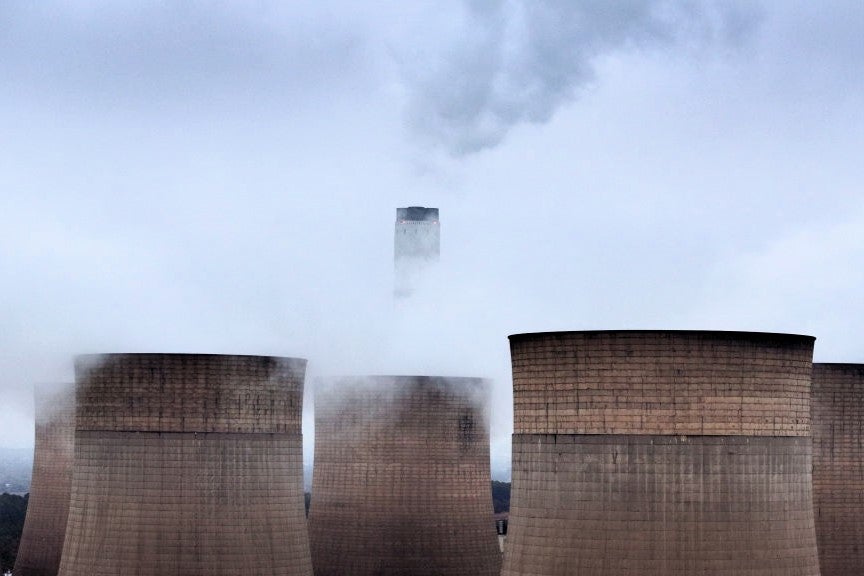As the era of coal comes to an end, how close is the UK to 100% clean energy?
The closure of the Ratcliffe-on-Soar power plant in Nottinghamshire is an historic moment, writes Anthony Cuthbertson. But how close are we to a new era fuelled purely by rewable energy, asks Anthony Cuthbertson


When Scottish inventor James Watt came up with a new steam engine design in 1765 that required 75 per cent less coal to operate than its predecessor, many people logically presumed that coal consumption would plummet. Instead, with coal now a more cost-effective power source, the Watt steam engine caused coal demand to increase exponentially.
In what became known as the Jevons paradox, Watt’s invention formed the foundation for the entire Industrial Revolution, with the first machines actually used for pumping out water from coal mines in order to access more coal. By 1882, the world’s first coal power plant opened in London to launch a new era of electricity generation that continues to see coal as the largest source of electricity globally to this day.
But 142 years and 4.6 billion tonnes of coal later, the last coal-fired power station in the UK has finally closed. As of Monday, the Ratcliffe-on-Soar power plant is no longer spewing carbon dioxide and other pollutants into the skies above Nottinghamshire.
After becoming the first in the world to generate electricity from coal, the UK is now the first major economy to phase it out. Such a rapid transition, which was only set into motion a decade ago, in only possible due to the rise of alternative electricity sources that are capable of meeting the rising energy demands.
Last year, a new record was set by renewable energy sources, with hydro, solar and wind power providing 44 per cent of the country’s electricity – up from just 7 per cent in 2010. This year, the share of renewables in the UK’s energy supply is projected to pass 50 per cent for the first time ever.
Coal-fired power plants still in operation around the world account for a third of global emissions, according to the International Energy Agency, but the UK is now being viewed as a template for others to follow. COP29 president-designate Mukhtar Babayev described it as “one of the fastest energy transitions in the world” and an “inspiring example of ambition”.
In Europe, wind and solar power has already overtaken fossil fuel-generated power, with wind turbines and solar panels accounting for 30 per cent of the EU’s electricity in the first six months of 2024.
Recent figures from energy think tank Ember reveal that 69 countries now generate more than 50 per cent of their electricity from renewable energy sources, with seven countries relying on renewables for 100 per cent of their electricity demands.
While the UK is set to pass this milestone next year, the National Grid has stated that the aim is not for renewable energy to be the sole source of electricity, but to provide the main share in a clean energy mix that includes nuclear power.
The UK’s ambition to fully decarbonise its power sector was recently pushed forward by the incoming Labour government, which set 2030 as the target – five years sooner than that set by the previous Conservative government. Reaching the goal will require phasing out gas twice as fast as coal was phased out, which will involve a doubling of onshore wind capacity, a trebling of solar and a quadrupling of offshore wind.
Fortunately for such ambitions, renewable energy sources are becoming cheaper and more efficient every month. Recent government estimates suggest that gas power is already several times more expensive than wind and solar – and the gap is growing. Meanwhile, new mega wind turbines that are double the size of the London Eye are generating enough electricity to power hundreds of thousands of homes by themselves, and innovations with next-generation ‘miracle material’ solar panels mean sunlight is being converted into electricity at rates never before thought possible.
So while technological progress for coal power may have peaked centuries ago, such rapid advances mean that some scientists and energy analysts believe that renewables are experiencing their own version of the Jevons paradox.
A study last year from the University of Exeter and University College London found that solar has reached an "irreversible tipping point" that will see it become the main source of energy globally by 2050.
“Solar energy is the most widely available energy resource on Earth, and its economic attractiveness is improving fast in a cycle of increasing investments,” the study noted. “We find that, due to technological trajectories set in motion by past policy, a global irreversible solar tipping point may have passed where solar energy gradually comes to dominate global electricity markets, without any further climate policies.”
One of the biggest obstacles to transitioning to renewable technologies is the intermittent nature of energy production. Vast amounts of energy storage are required to profit from periods of over production and provide a backup when there is no wind or sun.
Battery energy storage systems (BESS) offer a solution for excess electricity from renewable sources, though grid-scale setups involve units that are the size of shipping containers. Former coal-fired power plants are already being used to house these batteries, with previous grid connections making it simple to link the BESS to the grid.
One of several possible plans for the recently decomissioned Ratcliffe-on-Soar power station is to turn it into a giant battery for renewable energy storage, allowing it to form an improbable but integral part of the UK’s plans towards decarbonisation and net-zero.
“The closure of the final coal plant marks the beginning of a new era,” said Frankie Mayo, a climate analyst at Ember. “The UK has achieved something massive, shifting its power system from a huge polluter to one where renewables are thriving, in an astonishingly short period of time.
“But the work to build a clean power system will continue - to cut the need for expensive imported gas, to lower energy bills and to generate the clean electricity which will enable the rest of the economy to transition too.”






Join our commenting forum
Join thought-provoking conversations, follow other Independent readers and see their replies
Comments